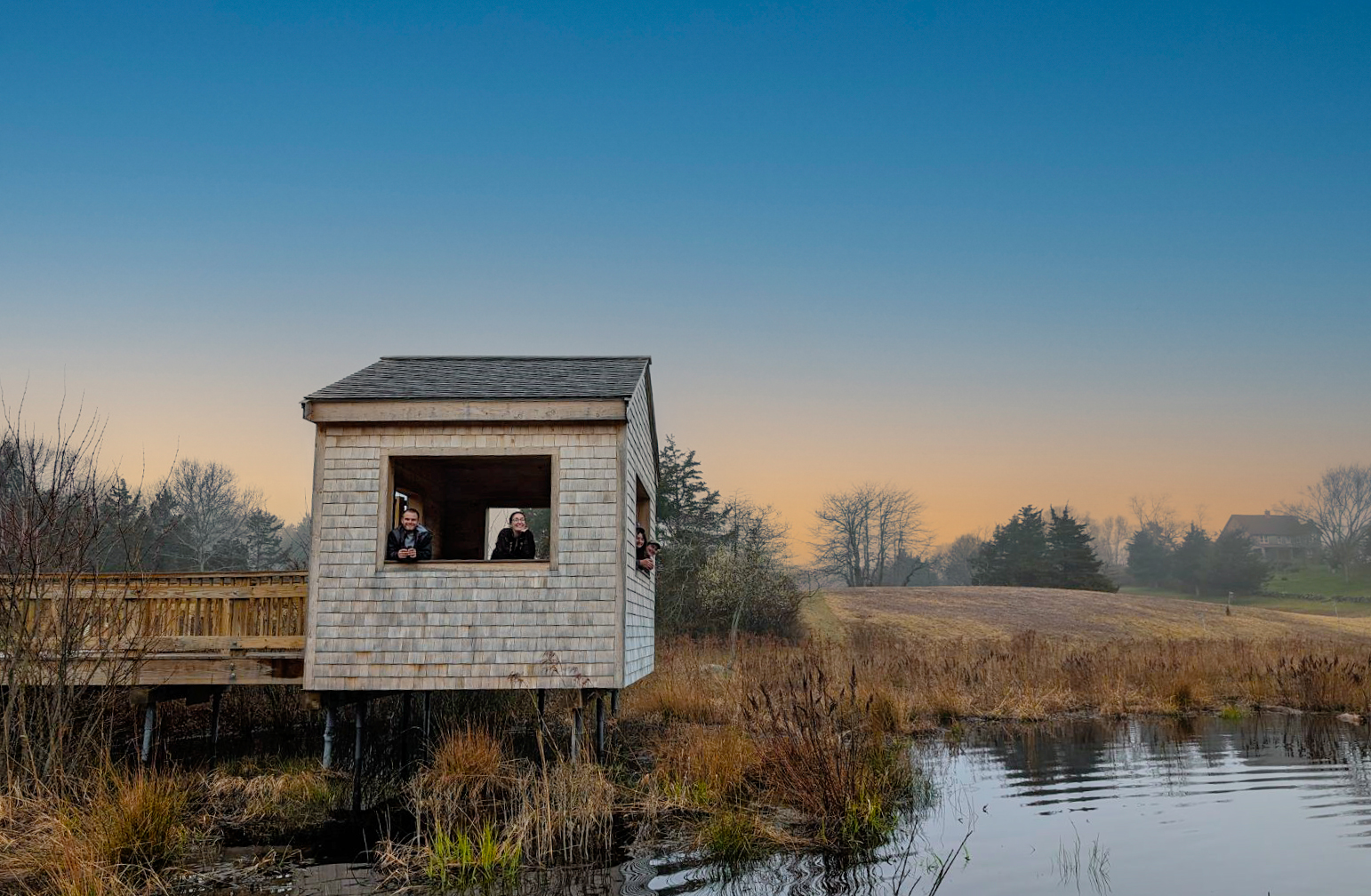During this fall’s banding season, 620 people visited the laboratory at Manomet’s headquarters property to learn about landbirds and their migrations.
“We had a total of more than 1,000 visitors to the banding lab this year,” said Banding Director Trevor Lloyd-Evans. That number includes the shorter spring banding season as well. “This is well above the average number of people that we’ve been able to reach in recent years through our education programs.”
Visiting groups included local elementary, high school, and college students, photography clubs and birding groups. Visitors to the laboratory received walking tours of the net lanes, viewed banding demonstrations, and listened to talks on migration and the connections between range shifts and climate change.
“The educational banding programs provide our visitors, including many young children, with the unique opportunity to learn about landbird migration in the field,” Lloyd-Evans said. “Our hope is that these direct experiences that connect people with nature will provide them with a sense of appreciation for birds and the natural world that will remain with them for years to come.”
The banding crew caught 4,176 birds during the three-month season, with 2,401 new birds and 1,775 recaptures. There was an average of 8.7 birds caught per hour of having the nets open, a number that has remained relatively stable over the past 20 years.
The most frequently caught bird was the Gray Catbird, with 473 new captures and over 1,000 handlings overall.
The season was marked by an unusually large number of irruptive bird species, which are species whose populations move southward in search of new feeding territory when there is insufficient food in their normal wintering ranges. Irruptive species that were either banded or seen on the Manomet headquarters property include Red-breasted Nuthatches, White-winged Crossbills, Pine Siskins and Evening Grosbeaks.
Another of the season’s highlights was an exceptionally high 176 new Tufted Titmouse captures.
“Tufted Titmice are one of several species for which our 47 years of banding data have suggested a northward range shift,” Lloyd-Evans said. “We have also seen similar range shifts in Red-bellied Woodpecker and House Finch populations, which could be indicative of responses to climate change.”
– Haley Jordan





 Back to all
Back to all